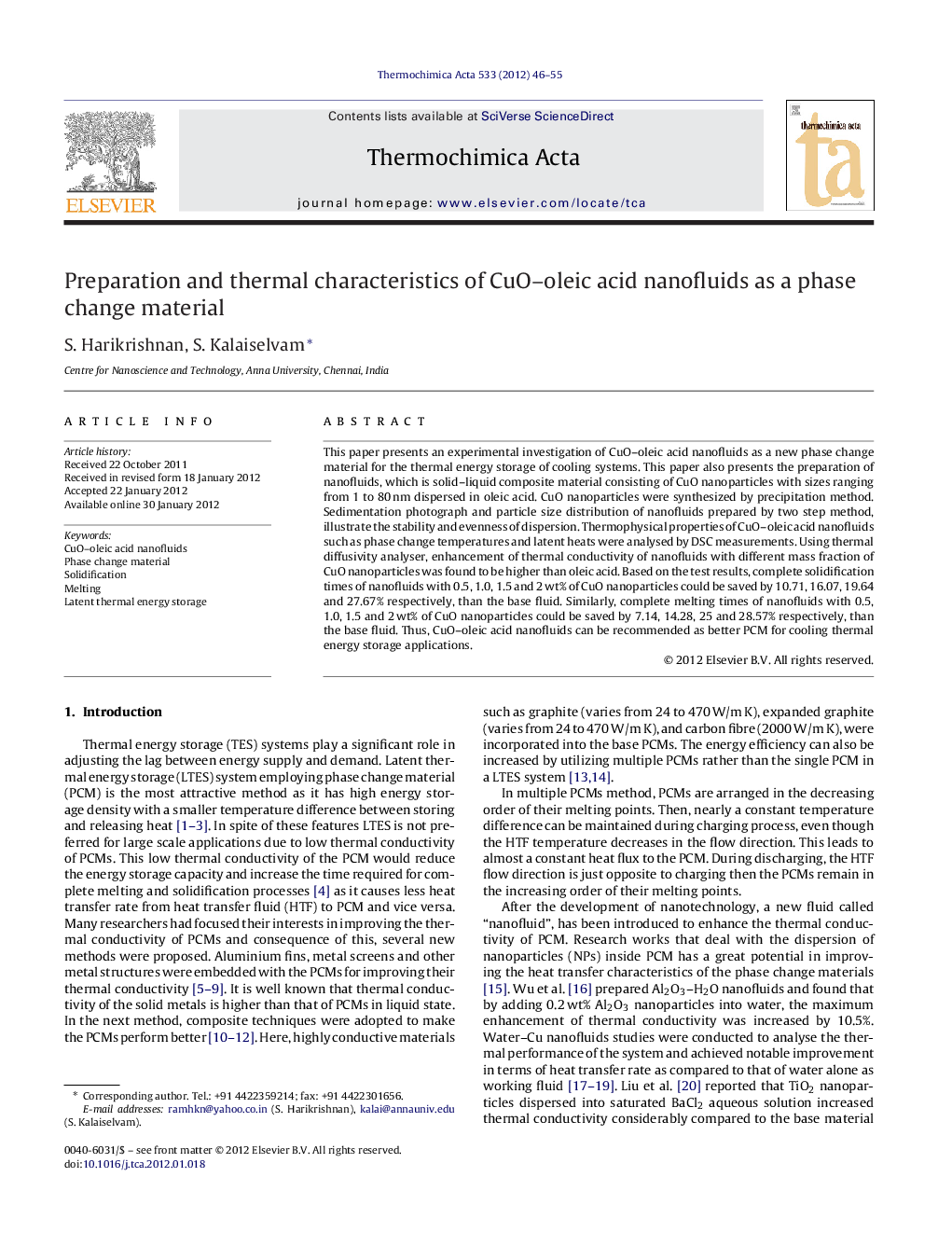| Article ID | Journal | Published Year | Pages | File Type |
|---|---|---|---|---|
| 674266 | Thermochimica Acta | 2012 | 10 Pages |
This paper presents an experimental investigation of CuO–oleic acid nanofluids as a new phase change material for the thermal energy storage of cooling systems. This paper also presents the preparation of nanofluids, which is solid–liquid composite material consisting of CuO nanoparticles with sizes ranging from 1 to 80 nm dispersed in oleic acid. CuO nanoparticles were synthesized by precipitation method. Sedimentation photograph and particle size distribution of nanofluids prepared by two step method, illustrate the stability and evenness of dispersion. Thermophysical properties of CuO–oleic acid nanofluids such as phase change temperatures and latent heats were analysed by DSC measurements. Using thermal diffusivity analyser, enhancement of thermal conductivity of nanofluids with different mass fraction of CuO nanoparticles was found to be higher than oleic acid. Based on the test results, complete solidification times of nanofluids with 0.5, 1.0, 1.5 and 2 wt% of CuO nanoparticles could be saved by 10.71, 16.07, 19.64 and 27.67% respectively, than the base fluid. Similarly, complete melting times of nanofluids with 0.5, 1.0, 1.5 and 2 wt% of CuO nanoparticles could be saved by 7.14, 14.28, 25 and 28.57% respectively, than the base fluid. Thus, CuO–oleic acid nanofluids can be recommended as better PCM for cooling thermal energy storage applications.
Graphical abstractFigure optionsDownload full-size imageDownload as PowerPoint slideHighlights► Nanofluid phase change materials exhibited enhanced heat transfer characteristics. ► Enhanced charging and discharging processes. ► Thermal conductivity enhancement of CuO–oleic acid nanofluids was 98.66% higher than oleic acid. ► Nano dispersed phase change materials with higher thermal stability.
